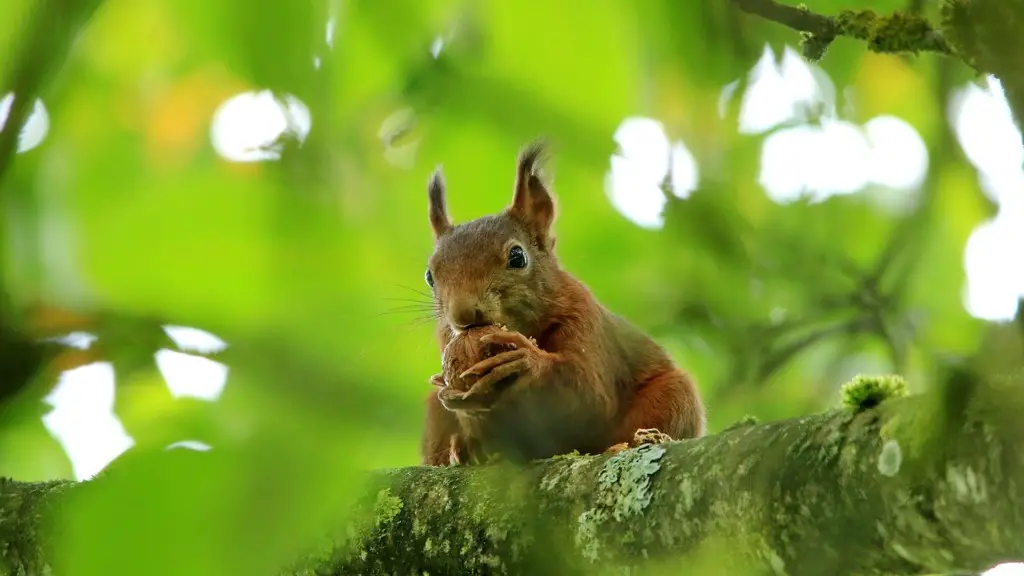It is quite common to notice curling leaves on lemon trees, particularly in times of environmental stress. Many lemon trees suffer from curling leaves due to heat, cold, or an imbalance of nutrients in the soil. The curling leaves can be a sign of either pest or disease-related problems. In order to determine why the leaves of the lemon tree are curling, one must first understand the condition of the leaves, soil, and climate.
The leaves of a lemon tree curl when the plant is faced with environmental stress. If the soil is too dry, the leaves of the lemon tree will curl due to lack of moisture. The same can be said if the soil is too wet; root rot can cause the leaves of the lemon tree to curl. Too much sunlight can also be a cause of curling leaves. Some varieties of lemon trees need more shade than others. Additionally, extreme temperatures can cause the leaves of a lemon tree to curl. Temperatures below freezing can cause the leaves to curl and become brittle.
In some cases, the curling of leaves on a lemon tree can be caused by pest infestation. Aphids, spider mites, and mealybugs are some of the most common pests that attack lemon trees and can cause curling leaves. They often secrete a sugary substance when they feed, which can lead to the growth of sooty mold. In some cases, the leaves of the lemon tree will curl due the stress caused by aphid infestation.
Fungal diseases such as powdery mildew, leaf spot, and rust can also cause the leaves of a lemon tree to curl. Theses diseases often occur due to humidity, poor drainage, and other environmental stressors. Additionally, nutritional deficiencies, such as an insufficient amount of nitrogen or iron, can lead to the curling of leaves on a lemon tree.
In order to properly address the issue of curling leaves on a lemon tree, the root cause of the issue must first be identified. To do this, one must take a closer look at the environment, pests, and diseases that could be contributing to the problem. Once the cause is identified, steps can be taken to address and resolve the issue.
Heat as The Cause for Curling Leaves
The first cause of curling leaves that should be considered is heat. While lemon trees are well-suited for warm climates, high temperatures can still cause the leaves to curl as a result of an imbalance of nutrients in the soil. When the nutrients in the soil decline, the plant struggles to take in the necessary nutrients and water to survive. This can lead to the wilting of the leaves, creating a curl.
High temperatures can lead to the blistering of the leaves on a lemon tree. This can happen if the temperatures reach levels that are not suitable for the tree. Blister-like tissue will form on the leaves, leading to their curling. In such cases, it’s best to move the lemon tree to an area with more shade and a better climate. Additionally, fertilizing and mulching the soil can help to restore any missing nutrients.
It’s also important to pay attention to the amount of water that is given to the lemon tree when the temperature rises. Too much water can lead to the roots of the tree rotting, which will lead to curling of the leaves. Additionally, the tree should not be watered during the hottest part of the day. Instead, water the tree in the morning or evening to avoid evaporation.
Overall, too much heat can cause curling of the leaves of a lemon tree. The best way to remedy this is to move the lemon tree to an area that offers more shade, as well as to make sure that the soil is fertilized and mulched. Additionally, pay attention to the amount of water given to the tree during hotter months.
Cold as the Cause for Curling Leafs
Cold weather is another common cause of curling leaves on a lemon tree. Lemon trees are not particularly cold-hardy and can suffer from frost damage if exposed to temperatures below freezing. When this happens, ice crystals form on the leaves and cause them to curl and become brittle.
It’s important to pay attention to the temperature of the area in which the tree is growing. If temperatures drop to freezing or below, protective measures should be taken to ensure the tree’s health. This can include covering the tree with polyethylene sheets or blankets during extreme weather. Additionally, trees should be mulched with organic materials or straw to provide insulation.
In some cases, extreme cold weather can lead to the dying of entire branches. If the branches are affected by frost, they should be pruned back to live wood in order to facilitate the growth of healthy new branches and leaves. If the cold weather persists, the tree may need to be relocated to an area with a more suitable climate.
Overall, cold weather can cause curling of the leaves on a lemon tree. To avoid this, make sure to provide the tree with proper insulation during cold months. Additionally, make sure that the tree is covered or moved to an area with a more suitable climate if necessary.
Pests as a Cause for Curling Leaves
Another common cause of curling leaves is pest infestation. Aphids, spider mites, and mealybugs are some of the most common pests that attack lemon trees and can cause curling leaves. Aphids, for example, feed on the sap of the leaves and secrete a sugary substance that can lead to the growth of sooty mold. This can cause the leaves of the lemon tree to curl as a result of the stress caused by the aphid infestation.
One of the first steps to take when it comes to curling leaves on a lemon tree caused by pests is to identify the type of pest that is causing the problem. Most pests can be identified by their presence on the leaves or by examining their secretions on the leaves. Once the pest has been identified, steps can be taken to address and eradicate the pest.
These steps may include the use of natural or chemical insecticides, as well as physical removal of the pest. Additionally, scouting for pests and early intervention are key to controlling infestations before they become too widespread. Planting companion species and increasing the diversity of nearby vegetation can also help to ward off pest infestations.
Overall, pest infestations can cause the leaves of a lemon tree to curl. To remedy this, one must identify the type of pest and take the necessary steps to eradicate it. Additionally, scouting for pests, planting companion species, and early intervention can help to ward off further infestations.
Diseases as The Cause for Curling Leaves
Diseases can also cause the leaves of a lemon tree to curl. Some of the most common illnesses include powdery mildew, leaf spot, and rust. These diseases often occur due to the build-up of humidity, poor drainage, and inadequate fertilization. Additionally, some types of fungus can cause the leaves of a lemon tree to curl.
In order to prevent and address disease-related curling of leaves, one must identify the type of disease that is causing the problem. Fungicides, insecticides, and other chemicals can be used to address diseases in lemon trees. Additionally, proper drainage and mulching of the soil can help to prevent disease by increasing the health of the plant.
It’s also important to provide the tree with the necessary nutrients for it to remain healthy. Trees should be fertilized on a regular basis with a balanced fertilizer containing nitrogen, phosphorous, and potassium. Additionally, make sure to avoid over-fertilizing, as this can lead to further problems such as leaf burn.
Overall, diseases can cause the leaves of a lemon tree to curl. To prevent and manage this, one must identify the type of disease and take the necessary steps to address it. This can include the use of fungicides, insecticides, and other chemicals; proper drainage and mulching of the soil; and providing the tree with the necessary nutrients.


